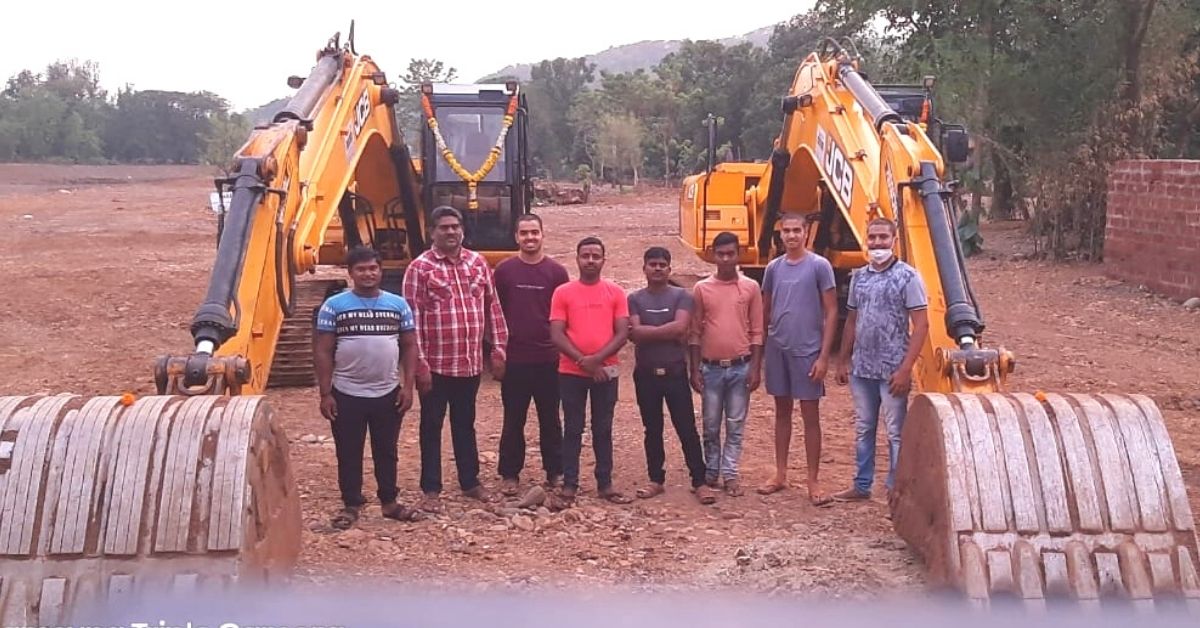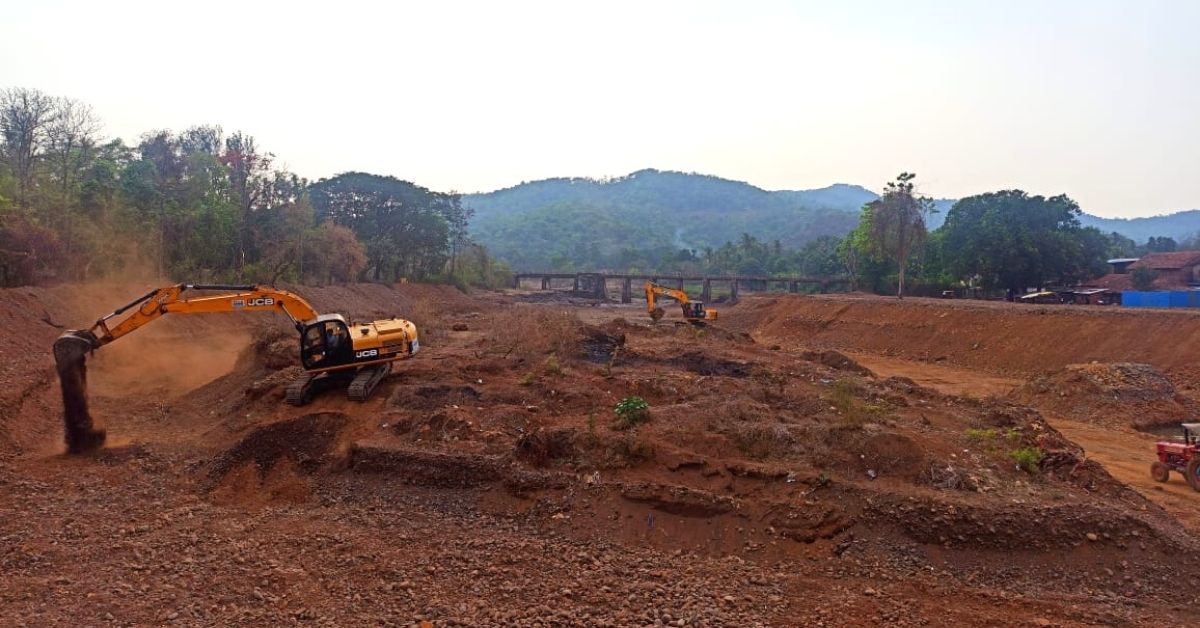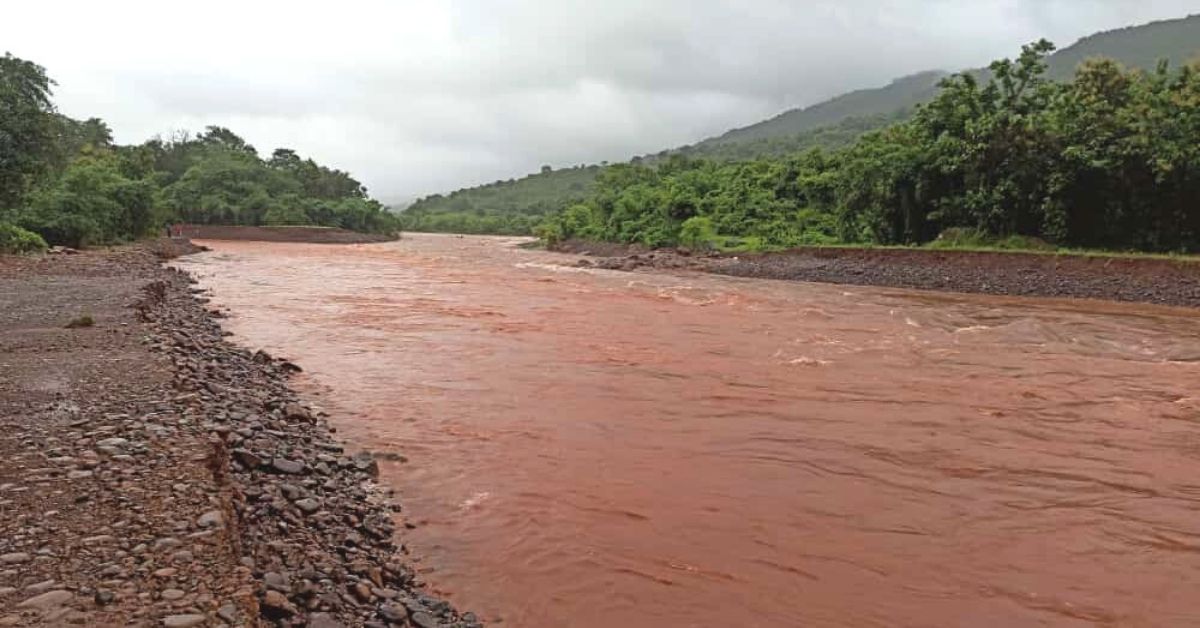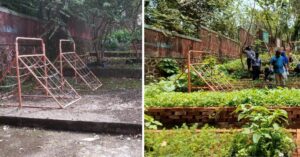Lessons From Group of 5000 Who Made Their Village Flood-Free After 70 Years
With the help of Naam Foundation, the village of Sakharpa has carried out de-siltation work to restore the course of the Kajali River in Maharashtra to become flood-free for the first time in 70 years

In July 2021, torrential rains in the city of Chiplun, Maharashtra, killed over 200 people and the subsequent flooding left over 50% of the town submerged.
The rainfall was recorded as the heaviest spell for July in 40 years, while also affecting other parts of the state such as Ratnagiri, Raigad and the surrounding areas of the Konkan region. However, two villages in Ratnagiri district have a different story to tell.
In 2019, for the first time in 70 years, Sakharpa and Kondgao did not flood, despite the incessant rain and a river flowing between the two.
Removing tons of silt

“River Kajali flows through the middle of the Sakharpa village, and in 1948, similar heavy rainfall and floods were experienced in adjacent villages. The result was so devastating that the course of the river changed,” says Mugdha Sardeshpande, a resident of Sakharpa.
Moreover, the river is a confluence of Kev and Gad rivers, which meet at the entrance of the two villages. “The massive confluence resulted in silt deposition in the river, narrowing its channel and water carrying capacity,” she adds.
Mugdha says, “The change in the course of the river and silt deposition contributed to flooding of the village market area. The overflowing water entered the market area and damaged electronic goods, grains in grocery shops, and other commodities, causing economic losses to traders and disturbing the village economy,” she tells The Better India.
But in the past two years, the locals have carried out restoration work in the river, which has helped increase its water carrying capacity and prevent flooding.
Mughda says the village has suffered through flooding issues for decades. However, the floods of 2005 finally compelled villagers to find a solution. “Heavy rain followed by floods put us in the same spot as Chiplun. The loss was devastating and the villagers approached the government authorities to find a solution,” she adds.
Mugdha, her family members, and a few villagers decided to contact the authorities at the Maharashtra Water Resources Department “Officials conducted a survey and recommended de-siltation and other technicalities along the 1-km stretch of the riverbed. However, the expenses came to up to around Rs 24 lakh, and the gram panchayat had no money for the task,” she says.
With such a shortage of funds, it seemed like the village had hit a dead end, and the problem of rain and flood persisted. But in 2019, Shridhar Kabnoorkar, another resident of Sakharpa, came up with a feasible solution.
Shridhar’s shop is among the first in the market to be submerged under flood water. “I suggested we take help from Naam Foundation, an NGO that works for the cause of solving the water criss in the rural areas,” he says.

“I was aware of the work they had done in a nearby village called Natal. I also knew some people associated with the organisation and approached them,” he adds.
Experts from Naam Foundation, as well as another NGO named Natural Solutions offered support by suggesting the use of earthmovers and other machinery. “The foundation put forth the condition that they will provide the village the machinery and offer technical and logistical expertise, but the residents would have to take equal responsibility and accountability of the work,” says Samir Janwalkar, a coordinator with Naam Foundation for the Konkan region.
Samir says the villagers and earthmovers carried out de-siltation work along the 1,100 metre stretch on both sides of the river bank. The river width increased to 60 metres wide and 4 metres deep. “The silt deposited along the river bed had made the river shallow, thus reducing the water carrying capacity. About five tractors, two trucks and other manual labourers removed 77,700 tons of silt from the river bed for over two months. Moreover, the river course was corrected to the way it was before the floods of 1948. The overall work continued for 3.5 months,” he says.
While the work was successful, the onset of COVID-19 slowed the process.
Mugdha says government officials were requested to provide work approvals. “Some work had already begun, and if kept on hold, the progress made till then would be undone. Fortunately, the permissions came through and work continued,” she says, adding that the villagers took a loan of Rs 12 lakh and contributed the remaining for the de-siltation and river widening work.
Setting an example
However, despite the progress made, the villagers were sceptical about whether the move would benefit them.
“The floods in 2021 would have been a repeat of the 2005 disaster. But the work done on the river showed results, as the village and marketplace did not flood despite incessant rains. It was a big achievement for the villagers,” she says.
Citing an example, Mugdha says, “The locals from our village often inform the residents of Chanderai village, located downstream, when heavy rains occur. Once we alert them about flooding in our village, they brace themselves and begin moving to a safe location. However, we never called the villagers this year, and instead, we received a call from one of the villagers asking about the absence of a warning call.”
Mugdha adds that when Chanderai residents learned about the river restoration work, they were impressed. “They came and saw the difference first hand, and are now planning to replicate the model,” she says.
She adds that the villagers are now shifting focus on water conservation. “The river floods every year, but by October and November, it dries. The villagers then rely on borewells. But it has resulted in overexploitation of groundwater, and every year there are hundreds of new bore wells dug across the village,” Mugdha says.
She adds that the villagers now plan on water conservation measures like building check dams and taking rainwater harvesting projects to replenish the groundwater levels and become water independent.
Mugdha says she wants her village to be an example for other villages. “We did not have government support and still pulled off the feat. Many villages can take a leaf out of our book and adopt some practices to benefit them and reduce the impacts of extreme weather,” she adds.
Edited by Divya Sethu
This story made me
- 97
- 121
- 89
- 167
Tell Us More
We bring stories straight from the heart of India, to inspire millions and create a wave of impact. Our positive movement is growing bigger everyday, and we would love for you to join it.
Please contribute whatever you can, every little penny helps our team in bringing you more stories that support dreams and spread hope.



















